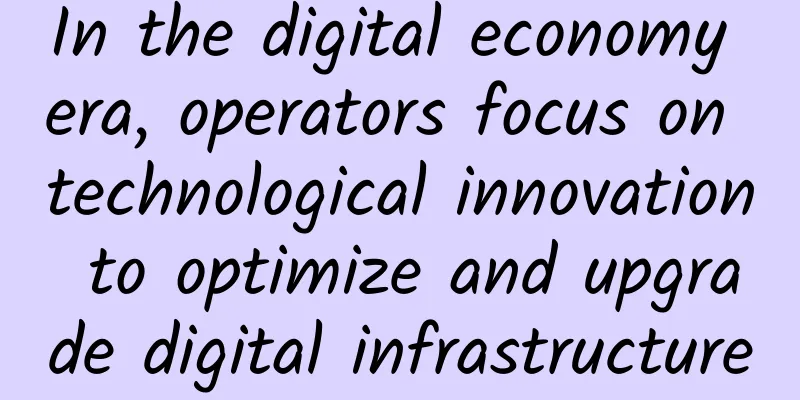How hard do communication networks work to save power?

|
The energy consumption of communication networks has always been the focus of people's attention. According to the financial reports of operators, in 2020, China Mobile's energy consumption cost was 37.66 billion yuan, China Telecom's was 14.64 billion yuan, and China Unicom's was 12.9 billion yuan. The three major telecom operators together spent 65.2 billion yuan. You should know that the profits of the three major operators in 2020 totaled only 141.148 billion yuan. Energy consumption costs of the three major telecom operators (unit: 100 million yuan) In recent years, with the large-scale construction of 5G and data centers, operators have not only invested a lot of construction funds, but also spent a lot on energy consumption costs, forming a heavy cost burden. We can also see from the figure below that operators' energy expenditure in 2020 soared by more than 6 billion yuan compared with the previous year, an astonishing growth rate. The ever-increasing energy consumption of communication networks means not only huge electricity bills, but also massive carbon emissions. According to the Ministry of Industry and Information Technology, based on the current development trend, China's total carbon emissions from 5G and data centers will reach 230 million to 310 million tons in 2035, accounting for about 2% to 4% of China's total carbon emissions, equivalent to twice Beijing's current carbon dioxide emissions. As we all know, our country has clearly put forward the "dual carbon" strategy in 2020, that is, to achieve "carbon peak" in 2030 and "carbon neutrality" in 2060. The energy consumption problem of communication networks has seriously hindered the realization of the "dual carbon" strategic goals. It is not only related to the operating performance of operators, but also affects our ecological environment and the sustainable development of the country's social economy. So, how can we solve the energy consumption problem of communication networks? How can we save energy and reduce emissions? Is there really a way to tame these "power tigers" such as 5G and data centers? Evolution of ideas for energy conservation and emission reductionOf course there is a way. In fact, the industry has been studying energy conservation and emission reduction in communication networks for many years and has accumulated and precipitated some experience and methods. With the rapid development of the times, the scale of communication networks has become larger and larger, and the energy consumption has also increased. Therefore, based on traditional empirical methods, the communications industry has proposed a more macro and scientific approach to energy conservation and emission reduction in communications networks, which can be summarized into two words: the entire life cycle of the network and end-to-end. The so-called energy conservation and emission reduction throughout the network life cycle refers to the overall planning from a macro perspective when designing and planning energy conservation and emission reduction plans, covering all aspects of communication equipment from research and development, production, construction to maintenance, to comprehensively improve efficiency and reduce energy. End-to-end means implementing energy conservation and emission reduction in all areas of communication networks, such as terminals, access networks (base stations), bearer networks, core networks, and data centers, from the perspective of products and equipment types. The new energy-saving and emission-reduction ideas emphasize holistic thinking and multi-dimensional collaboration, which has brought about a significant improvement in energy-saving efficiency. They are gradually being accepted by more and more operators and equipment manufacturers, becoming an industry trend. Specific measures for energy conservation and emission reductionNext, we will introduce the energy-saving measures of communication networks one by one from the perspective of the entire life cycle of the network. Let’s first look at the product R&D and design phase. Controlling and improving equipment power consumption during the product development and design phase is equivalent to saving energy and reducing emissions from the source. This is the most direct way, but also the most difficult way, and requires a high level of R&D capabilities from the company. The company needs to invest a lot of resources in innovation and trial and error, and the room for improvement is getting smaller and smaller. Take 5G base stations as an example. The energy consumption of 5G base stations has always been the focus of people's attention. Due to the introduction of AAU active antennas and Massive MIMO technology, the energy consumption of 5G base stations has increased significantly compared to 4G. The power consumption of a single 5G station is about 2.5~3.5 times that of 4G. (Of course, we also need to note that the energy consumption per bit of 5G has decreased significantly. In other words, the energy efficiency of 5G is significantly higher than that of 4G.) Comparison of 4G/5G base station power consumption in 2019 Data source: "New variables in new infrastructure, green communications under "dual carbon"" In order to reduce the operating power consumption of 5G base stations, equipment manufacturers have racked their brains. During the product design phase, manufacturers need to place energy consumption indicators on an equal footing with performance indicators. In order to meet energy consumption requirements, they will achieve the ultimate energy efficiency of their products by adopting self-developed high-performance chips, more reasonable product structure design, and more advanced materials and processes. Take ZTE as an example. ZTE is a core supplier of wireless system equipment in the world and delivers hundreds of thousands of 5G base stations to customers every year. Therefore, they attach great importance to the energy consumption indicators of 5G base stations. They develop their own highly integrated, high-performance baseband processing and digital intermediate frequency processing chips, and use them in conjunction with highly integrated transceivers. They continuously optimize circuit design and DPD processing, effectively improving power amplifier efficiency and comprehensively reducing the overall energy consumption of 5G AAU equipment. ZTE's base station products 5G power amplifiers are core components of base stations. ZTE uses GaN+ technology combined with hardware algorithm improvements to achieve power amplifier efficiency of more than 55%. In terms of new technologies and new materials, ZTE has improved the heat dissipation efficiency by 20% by optimizing the thermal conductivity and heat dissipation performance of AAU, reducing weight, and using innovative V-shaped bionic heat dissipation teeth combined with new materials and ultra-light architecture. Last year, Huawei released the energy efficiency evaluation system for green 5G networks, E2 (Energy Efficiency). In terms of access networks, Huawei believes that the evolution of 5G radio frequency to ultra-large-scale antenna arrays enables spatial beam concentration and improves energy transmission efficiency. In addition, Huawei also proposed that the use of multi-channel technology in the active RF part to increase equipment capacity can also significantly improve the bit energy efficiency of the equipment. In addition, through the use of efficient ultra-wideband power amplifiers and channel technology, multiple single-frequency devices can be integrated into an ultra-wideband device, which can also significantly reduce the number and cost of equipment deployment and reduce equipment energy consumption. Next comes the product manufacturing stage. How to reduce energy consumption in the industrial manufacturing process is not only a problem for the communications industry, but also a common problem for the entire industrial sector. Previous energy-saving methods mainly focused on equipment process upgrades and energy transformation and replacement. Now, the energy-saving space of this method is getting smaller and smaller. Therefore, the introduction of various digital intelligent technologies such as 5G, industrial Internet, MEC, AI, etc. for intelligent manufacturing has become a new choice for the industrial sector. Smart manufacturing workshop Smart manufacturing has achieved a high degree of digitalization, intelligence and unmanned operations, which has greatly improved production efficiency and reduced carbon emissions in the production process. Next, we will focus on the construction and operation of communication networks. These two links are now the focus of energy conservation and emission reduction for the entire industry, and have great development potential. Let’s take a look at the base station side first. For operators, 70% of 5G energy consumption comes from RAN (access network). Therefore, energy saving and consumption reduction on the site side is their top priority. Energy model of base station sites (Source: GSMA, translation: Xianzao Classroom) Energy saving of base stations usually includes the following methods: improvement of site networking solutions, use of clean energy, introduction of AI technology, etc. The centralization, greening and miniaturization of sites have been the mainstream trends in recent years. Especially after C-RAN was proposed, with the upgrading of technology, the networking and deployment methods of base stations have begun to change significantly. Mainstream equipment manufacturers including ZTE and Huawei have proposed minimalist site solutions. In the plan, the construction mode of base stations changes from distributed to centralized, and from geometric superposition to logical integration. For example, the equipment is miniaturized and integrated, the machine room is changed into a cabinet, and the cabinet is changed into a pole station, so as to minimize the space occupied by equipment and reduce the number of machine rooms, thereby reducing the cost of machine room rental and air conditioning costs. In terms of energy, the main energy-saving measures for base stations are: using a large amount of clean energy, converting city electricity into green electricity, reducing electricity bills and reducing carbon emissions. Specific practices include: 1. Use solar photovoltaic power as much as possible to achieve multi-source power supply guarantees such as solar energy, AC power, and batteries. During the peak electricity consumption period in the day, photovoltaic and energy storage battery equipment provide power, and the energy storage battery uses the low electricity consumption period at night to store energy, achieving the purpose of "peak shaving and valley filling". Anhui Lu'an Mobile's 5G green base station 2. Use lithium batteries instead of lead-acid batteries.Traditional lead-acid batteries face many problems, such as large size, heavy weight, short cycle life, and strict environmental requirements. Too high temperature will shorten the life, and too low temperature will affect the performance. In comparison, lithium batteries are not only small in size and light in weight, but also more environmentally friendly. The energy volume density and energy weight density of lithium batteries are 4-5 times that of lead-acid batteries, and the cycle life is increased by 10-20 times. Image source: Edge Data Center Infrastructure for 5G White Paper In the past, lithium batteries were mainly used for backup power. Now, there are many intelligent energy storage system solutions around lithium batteries. Smart energy storage system (Image source: White Paper on Top Ten Trends in Digital Energy) This type of system uses a more accurate electrochemical model, introduces digital intelligent technology, improves the accuracy of energy storage management, and can achieve better coordination with the power grid. It can also manage peak power consumption according to the tiered electricity price and maximize the efficiency of peak operation. In addition to network architecture and energy transformation, the most effective means of saving energy and reducing emissions in communication networks is "intelligent operation and maintenance." In other words, deploying intelligent energy management tools can improve network operation and maintenance efficiency, reduce ineffective site costs and site downtime risks, and reduce network maintenance costs through multi-level energy efficiency improvement, preventive maintenance, multi-dimensional operation management and other functions. When it comes to intelligence, AI is of course indispensable. AI technology has developed very rapidly in recent years, and the introduction of communication technology to AI focuses on the operation and maintenance stage. Based on AI and big data technologies, communication services are predicted, scheduled and allocated through intelligent algorithms, which can achieve optimal energy consumption per bit while ensuring user experience. The most effective way to save energy on base stations is to shut them down. A few years ago, there was a popular saying that operators would shut down 5G base stations during low-peak periods to save electricity costs. This statement caused an uproar in society at the time. In fact, frequent switching on and off of base station power has a great impact on the life of the equipment. Now when operators shut down equipment, they do not simply turn off the power of the entire equipment, but perform multi-dimensional and multi-granular energy-saving shutdowns based on accurate analysis and prediction of business loads. In other words, it is a smarter way to shut down - without shutting down the base station, you can shut down the carrier, antenna channel, or even subframe and symbol. Subframe shutdown Channel shutdown Carrier off 4G/5G common mode base station collaborative shutdown Take ZTE's PowerPilot intelligent power saving solution as an example. It can realize symbol-level, channel-level and carrier-level shutdown, and realize multi-level power saving at the site level for differentiated coverage scenarios, time periods and base station loads. It can also proactively identify energy-saving scenarios through network traffic and configuration information analysis, match energy-saving functions in different dimensions, implement a “one-stop, one-policy” approach to energy saving, accurately predict network traffic load trends, and further tap network-level energy-saving efficiency. Huawei's PowerStar2.0 solution is also an intelligent power-saving solution that adjusts the allocation of network resources such as spectrum and carriers in real time based on business changes. It comprehensively improves energy-saving measures in terms of shutdown resource types, shutdown duration, and operation and maintenance efficiency, and achieves both energy saving and network performance through multi-dimensional collaboration. Energy saving and emission reduction in data centersIn addition to base stations, I would also like to briefly talk to you about energy conservation and emission reduction in data centers. With the launch of the national "East Data West Computing" strategy, data centers have become the focus of the entire society. As the main carrier of computing power, it also faces severe energy consumption problems. According to data, in 2020, data centers across the country consumed a total of 204.5 billion kWh of electricity, accounting for 2.7% of the total electricity consumption in society, which is very shocking. Image source: Research on Energy Consumption and Renewable Energy Use Potential in China’s Data Centers The energy-saving and emission-reduction solutions of data centers have a lot in common with those of base stations, such as the introduction of new energy sources and the adoption of AI operation and maintenance. However, due to the large size and scale of data centers, their energy-saving solutions have many special features. When I introduced "East Data West Computing" before, I mentioned that there is a special indicator for data centers called PUE (Power Usage Effectiveness). PUE = total energy consumption of data centers / energy consumption of IT equipment. The closer this value is to 1, the less energy the non-IT equipment in the data center consumes, that is, the higher the energy efficiency level. In addition to IT business equipment, the largest energy consumption expenditure in data centers is concentrated on heat dissipation and cooling. Therefore, the energy-saving ideas of data centers focus on two aspects: first, using cleaner electricity and increasing the proportion of renewable energy; second, adopting new refrigeration technologies and methods to improve refrigeration efficiency. The proportion of renewable energy is self-evident. National policies are guiding data center construction to areas with more abundant wind power, hydropower, and solar energy in order to better utilize new energy and reduce dependence on fossil energy. In addition to external energy sources, data centers are also working hard to transform their internal energy storage systems, adopting the "HVDC + mains" solution to replace the traditional "UPS + mains" solution. HVDC is High Voltage Direct Current, high voltage direct current transmission. "HVDC + mains" has higher reliability and safety, and better power supply efficiency than "UPS + mains", and is the mainstream development trend of uninterruptible power supply. Many data center service providers now focus on building flexible energy modules, integrating and intelligently mobilizing equipment for power consumption, backup power, and energy storage scenarios to form local routers for data center energy networks. To put it simply, it is to change from a single mains power source to a multi-energy complement, so that any power source can be used and flexibly adapted. It is worth mentioning that DC is now becoming the choice of more data centers because DC has lower losses and higher energy utilization, which meets the high energy consumption requirements of current data centers with high computing power. Let’s focus on heat dissipation and cooling. The traditional heat dissipation method in data centers is air cooling. The cold air generated by the computer room air conditioner (CRAC) or computer room air handling unit (CRAH) is transported to the location of the equipment through the air supply duct for cooling. In the past, air cooling was done at the room level, that is, the entire computer room was cooled by blowing air. This method has a long cooling path and is too inefficient. What is popular now is pool-level, row-level and cabinet-level air cooling, that is, the heat dissipation design is centered on a cabinet pool, a row of cabinets or a single cabinet. Cabinet row-level heat dissipation, with a row of cabinets as the object, carries out air duct design. Obviously, the shorter the airflow path, the more efficient the heat dissipation. In addition to air cooling, water cooling and liquid cooling are gradually becoming popular. The heat conductivity of liquid is 25 times that of air. Under the same volume, the heat carried away by liquid is nearly 3,000 times that of air. From the perspective of noise, at the same heat dissipation level, the noise of liquid cooling is 20-35 decibels lower than that of air cooling. From the perspective of energy consumption, liquid cooling saves 30%-50% of electricity compared to air cooling. There are two types of liquid cooling. One is that the liquid does not come into direct contact with the heat sink (it only participates in heat exchange), and the other is that the liquid refrigerant comes into direct contact with the heat sink (even immersed in the refrigerant). The latter has the highest cooling efficiency and can almost achieve a PUE of 1.04 (the limit is close to 1), but it also has the highest cost and technical difficulty. There are several other cooling technologies that are becoming increasingly popular in data centers, such as backplane air conditioning and indirect evaporative cooling. Indirect evaporative cooling air conditioner In addition to renewable energy and refrigeration technology innovations, data centers have also adopted many other energy-saving and emission-reduction measures, such as the large-scale use of prefabricated modular data centers to shorten construction periods and simplify construction processes. Prefabricated Modular Data Center For example, just like base stations, AI technology is introduced to intelligently upgrade the energy management and operation and maintenance systems of data centers, perform energy saving and health modeling, use AI algorithms for data training, and finally form the optimal parameter optimization. ConclusionLooking to the future, our country is at a critical stage of accelerating the launch of the digital economy. The digital transformation of all walks of life is gradually spreading, and there is a strong demand for ICT digital infrastructure. How to support these demands while ensuring the "dual carbon" goals is a difficult problem facing the entire industry. It is hoped that industry enterprises can continue to increase R&D investment in the field of energy conservation, explore more energy-saving technology innovations, and embark on a unique "green communication" development path. |
<<: 5G is not yet popular, and 6G is coming?
>>: Cyber attacks are powerful, and Microsoft was hit! Five reflections on corporate risk control!
Recommend
DogYun Double 11: 40% off on dynamic cloud hosts, 100 yuan/month discount on dedicated servers, 10 yuan free for 110 yuan recharge
DogYun (狗云) released this year's Double 11 pr...
QuickPacket: $69/month - E5-2683v4 CPU, 64G memory, 1TB or 500G SSD, 50TB monthly traffic, Los Angeles data center
I searched and found that the last information ab...
The road to containerized network functions
【51CTO.com Quick Translation】Service providers an...
Qinghai University: Ruijie's "Beauty of Minimalism" Blooms Magnificently on the Smart Campus on the Plateau
At present, the informatization construction of c...
Hanwha to invest $300 million in satellite operator OneWeb
According to Yonhap News Agency, Hanwha Systems, ...
Now is the time to use 5G indoors
Operators have made huge investments in 5G RAN, w...
How to implement Nodejs inter-process communication
[[350246]] This article is reprinted from the WeC...
5G+ marks the next big shift for Asia’s industry
COVID-19 has been one of the biggest disruptors i...
WiFi is slow and stuck, maybe it’s a traffic jam
The NBA Finals are coming! But when using WiFi to...
Encryption makes enterprise data no longer "naked"
At present, the network security environment is d...
Analysis: The battle for existing capacity is becoming more and more obvious, and the role of broadband may become more prominent
The continuous loss of mobile phone users has bec...
CloudCone: Los Angeles VPS with large hard disk starts at $20 per year, regular KVM starts at $12.95 per year
CloudCone has launched a new flash sale, launchin...
Where did smart watches lose out?
【51CTO.com Quick Translation】 The failure of smar...
my country started IPv6 construction early but is still late. How will we roll up our sleeves and work hard in 2017?
As early as 2003, my country put the development ...
VirMach: $7.2/year KVM-512MB/10GB/1TB/multiple data centers available
VirMach has launched the SUMMER HOSTSALE promotio...









